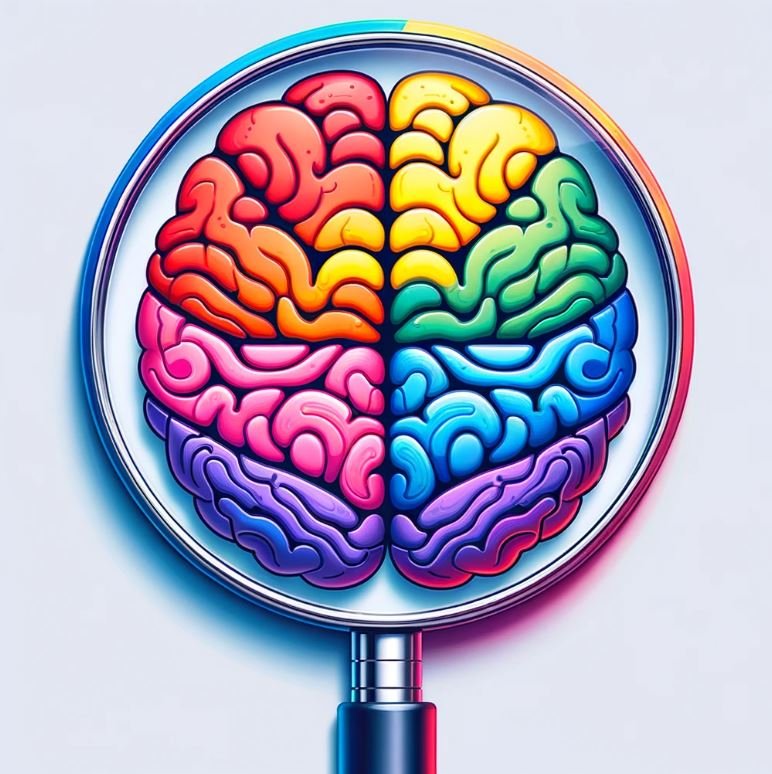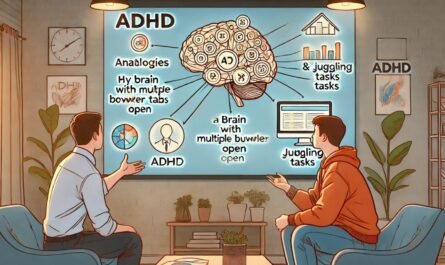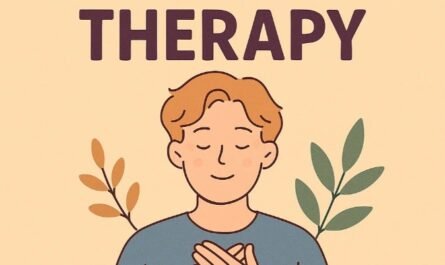ADHD, often perceived through a narrow lens, exhibits a wide range of symptoms and behaviors. Dr. Daniel Amen categorizes 7 types of ADHD, each requiring specific approaches for treatment and management. Please keep in mind that this is based on his categorization system and not on the DSM.
Key Takeaways – 7 Types of ADHD
- ADHD exhibits in seven distinct types, each with unique symptoms and treatment needs.
- Treatment approaches vary significantly across types, involving medications, lifestyle changes, and dietary adjustments.
- Understanding the specific type of ADHD is crucial for effective management and treatment.
Classic ADHD
Classic ADHD is what most people think of when they hear ADHD. It involves symptoms like inattention, hyperactivity, and impulsivity. Individuals often struggle with executive functions such as decision-making and impulse control. Treatments typically involve stimulant medications which boost neurotransmitter levels, improving attention and reducing hyperactivity.
- Common in both children and adults.
- Treatments focus on increasing dopamine levels.
- Stimulant medications like Ritalin and Adderall are commonly used .
Inattentive ADHD
This type is marked by significant inattention and distractibility but does not include the hyperactivity component. It’s more frequently diagnosed in females and might involve reduced prefrontal cortex activity. Treatment may involve both stimulant and non-stimulant medications to enhance dopamine levels and focus.
- Often misdiagnosed due to the absence of hyperactivity.
- Medications used include both stimulant and non-stimulant types.
- Requires tailored strategies to improve attention and manage symptoms .
Over-Focused ADHD
Individuals with Over-Focused ADHD exhibit classic ADHD symptoms but also have trouble shifting attention and may get stuck in negative thought patterns. This type could be associated with both serotonin and dopamine deficiencies. Treatments may include medications to boost these neurotransmitters.
- Difficulty shifting attention from one task to another.
- May exhibit obsessive and argumentative behavior.
- Treatment focuses on balancing serotonin and dopamine levels .
Temporal Lobe ADHD
Characterized by classic ADHD symptoms plus issues like mood instability and aggression. It’s often seen in individuals who’ve had a head injury. The treatment aims at stabilizing electrical activity in the brain, potentially involving anticonvulsants and neuronutrient therapy.
- Common in people with a history of head injuries.
- Symptoms include mood swings, aggression, and learning issues.
- Treatment may include anticonvulsants and neuronutrient therapy .
Limbic ADHD
This type resembles a mix of depression and classic ADHD symptoms like chronic sadness and low self-esteem. It’s believed to result from overactivity in the brain’s emotional centers. Treatments might include antidepressants, supplements, and lifestyle changes aimed at enhancing mood and motivation.
- Exhibits symptoms of chronic sadness alongside classic ADHD.
- Caused by overactivity in the limbic part of the brain.
- Treatment involves a combination of medication and lifestyle adjustments .
Ring of Fire ADHD
Distinct for its broad, severe symptoms due to generalized brain overactivity. It can worsen with typical stimulant medications. Treatment may require dietary changes, supplements, and possibly anticonvulsants to manage the wide array of symptoms.
- Characterized by an overactive brain and severe symptoms.
- Requires a comprehensive treatment approach beyond conventional ADHD medications.
- Stimulants may exacerbate symptoms; alternative treatments are considered .
Anxious ADHD
Combines classic ADHD symptoms with anxiety and tension. This subtype is related to overactivity in areas of the brain linked to fear and anxiety. Treatment includes medications and supplements that promote relaxation and reduce anxiety.
- Individuals experience intense anxiety on top of ADHD symptoms.
- High activity levels in the basal ganglia are common.
- Treatment focuses on increasing GABA and dopamine levels while reducing anxiety .
Dr. Daniel Amen’s classification has been subject to debate within the scientific community due to reliance on SPECT scans and a lack of universal acceptance. Despite this, many find the categorization helpful in understanding and treating their specific symptoms.
For further insights into managing mental health and ADHD, explore resources like What are the Key Signs of Stress Affecting Mental Health?, Why Might Someone Avoid Getting Help for a Mental Health Concern?, Mental Instability: Navigating the Complex Landscape, Understanding Postpartum Mental Disorders, and Coping with New Job Stress for more comprehensive support and information.
Detailed Questions on the Seven Types of ADHD
1. How do the symptoms of Classic ADHD differ from those of Inattentive ADHD, and what impact do these differences have on diagnosis and treatment?
Classic ADHD is typically characterized by inattention, hyperactivity, and impulsivity, with individuals displaying significant energy levels and a preference for physical activity. This form of ADHD is commonly seen in boys and is easier to diagnose due to its overt symptoms. Treatment often involves stimulant medications to increase dopamine levels, thereby improving attention and reducing impulsivity.
Inattentive ADHD, on the other hand, manifests primarily through inattention and distractibility without the hyperactivity. This type can be more challenging to diagnose, especially since it tends to be quieter and less disruptive; it is often diagnosed later in life and is more common in females. The treatment for Inattentive ADHD also aims to increase dopamine levels but requires careful attention to the absence of hyperactivity, making stimulant and non-stimulant medications options based on the individual’s symptoms.
The differences between these types impact diagnosis and treatment, as Classic ADHD symptoms are more apparent and socially disruptive compared to the subtler, more internalized symptoms of Inattentive ADHD. Understanding these differences is crucial for appropriate treatment and management, ensuring that individuals with Inattentive ADHD receive the attention and care they need despite the lack of visible hyperactivity.
- Classic ADHD features overt hyperactivity, making it easier to diagnose and treat.
- Inattentive ADHD is characterized by quiet, inattentive symptoms, often leading to later diagnosis.
- Tailored treatments are necessary to address the specific symptoms presented by each type.
2. What are the distinguishing characteristics of Overfocused ADHD, and how does this subtype affect individuals’ behaviors and treatment approaches?
Overfocused ADHD is marked by difficulty shifting attention and becoming stuck in negative thought patterns. Individuals with this subtype may struggle to transition from one task to another and tend to fixate on specific subjects or activities, often resulting in obsessive behavior and excessive worrying. This type is associated with a deficiency in both serotonin and dopamine, contributing to the difficulty in shifting focus and the tendency toward negative rumination.
In real-life scenarios, those with Overfocused ADHD may display strong reactions to minor offenses, hold grudges, and become upset when things do not go their way. This subtype can lead to significant stress in social interactions and decision-making due to their inability to let go of certain ideas or grievances. Treatment for Overfocused ADHD involves balancing serotonin and dopamine levels, often through a combination of medications and behavioral therapy.
Understanding the characteristics of Overfocused ADHD is essential for developing effective treatment strategies. By addressing the unique needs of individuals with this subtype, such as their tendency to get stuck in negative thought loops, clinicians can provide more targeted and effective interventions, improving outcomes and quality of life.
- Overfocused ADHD is characterized by difficulty shifting focus and negative rumination.
- Affects behavior through strong reactions and difficulty with social interactions.
- Treatment targets serotonin and dopamine levels to address specific cognitive and emotional challenges.
3. How does Temporal Lobe ADHD impact learning and memory, and what implications does this have for educational and therapeutic interventions?
Temporal Lobe ADHD is associated with problems in the temporal lobes, affecting learning, memory, and emotional regulation. Individuals with this subtype may experience irritability, mood swings, and aggression, alongside classic ADHD symptoms. These additional challenges can significantly impact educational achievement and social interactions, necessitating tailored interventions.
Educationally, students with Temporal Lobe ADHD may require specific support to address learning disabilities and memory problems. Techniques might include using mnemonic devices, providing structured and predictable learning environments, and implementing behavioral management strategies to handle mood instability and aggression. Personalizing educational approaches to accommodate these needs is crucial for their academic success.
Therapeutically, treatments might include medications to regulate neuronal activity and mood, alongside interventions like cognitive-behavioral therapy to address behavioral issues. Understanding the unique challenges posed by Temporal Lobe ADHD allows educators and therapists to provide more effective support, improving outcomes for affected individuals.
- Temporal Lobe ADHD impacts learning, memory, and emotional regulation.
- Requires tailored educational interventions and support for learning disabilities.
- Therapeutic interventions may include medication and cognitive-behavioral strategies.
4. What role does emotional regulation play in Limbic ADHD, and how can individuals manage the associated mood symptoms?
Limbic ADHD features chronic low-level sadness and emotional dysregulation, often resembling a persistent mild depression. This subtype results from increased activity in the brain’s limbic system, which controls moods, coupled with reduced activity in the prefrontal cortex. These neurological patterns contribute to moodiness, negativity, and low self-esteem, impacting individuals’ overall well-being and daily functioning.
Managing the mood symptoms associated with Limbic ADHD involves a combination of medication, supplements, and lifestyle changes. Treatments may include antidepressants and supplements like DL-phenylalanine (DLPA), L-tryosine, and SAMe, aimed at balancing brain chemistry. Lifestyle interventions, such as regular exercise, a balanced diet, and stress management techniques, can also significantly improve symptoms and enhance overall well-being.
Emotional regulation in Limbic ADHD is crucial since mood fluctuations can profoundly impact daily life and relationships. Cognitive-behavioral therapy (CBT) can be particularly effective, helping individuals understand and change the negative thought patterns contributing to their emotional challenges. Building a strong support network and engaging in regular self-care activities can also help manage mood symptoms associated with this subtype.
By addressing both the neurological and emotional aspects of Limbic ADHD, individuals can achieve better emotional balance and improve their quality of life. It’s important for those with this subtype to work closely with healthcare providers to develop a comprehensive treatment plan that addresses their unique needs.
- Limbic ADHD involves chronic sadness and emotional dysregulation.
- Treatment includes a combination of medications, supplements, and lifestyle changes.
- Emotional regulation strategies, such as CBT and self-care, are essential for managing mood symptoms.
5. Considering the complex nature of Ring of Fire ADHD, what strategies can be employed to manage its broad range of symptoms effectively?
Ring of Fire ADHD is characterized by widespread brain overactivity, leading to a diverse array of intense symptoms beyond the core ADHD features, including extreme distractibility, sensitivity to stimuli, and mood instability. This subtype can be challenging to treat due to its severity and the potential exacerbation of symptoms by standard stimulant medications. A multidimensional approach is necessary, incorporating dietary adjustments, supplements, medication, and behavioral therapy.
Management strategies for Ring of Fire ADHD typically start with identifying potential allergens or irritants that could be contributing to brain overactivity. An elimination diet may be helpful to determine food sensitivities. Supplements such as GABA, 5-HTP, and L-tyrosine might be used to reduce brain hyperactivity and support neurotransmitter balance. Medications, particularly non-stimulant options like anticonvulsants, may also be necessary.
Behavioral interventions, including neurofeedback, cognitive-behavioral therapy, and stress-reduction techniques like mindfulness and meditation, can provide significant benefits. Creating a structured, low-stimulus environment can help reduce sensory overload, while regular physical activity and a consistent routine can help manage hyperactivity and mood swings. Collaboration with a healthcare team is crucial to tailor the treatment plan to the individual’s needs and monitor for effectiveness and side effects.
- Ring of Fire ADHD requires a comprehensive, multidimensional treatment approach.
- Strategies include dietary changes, targeted supplements, and appropriate medications.
- Behavioral interventions and environmental adjustments are key for managing symptoms.
10 FAQ Questions with Responses
1. What is Classic ADHD?
Classic ADHD is characterized by inattention, hyperactivity, and impulsivity, often treated with stimulant medications.
2. How does Inattentive ADHD differ from other types?
Inattentive ADHD is marked by significant inattention and distractibility without hyperactivity, often resulting in late diagnosis, especially in females.
3. What is Over-Focused ADHD?
Over-Focused ADHD involves difficulty shifting attention, getting stuck in negative thoughts, and needing a balance of serotonin and dopamine.
4. What defines Temporal Lobe ADHD?
Temporal Lobe ADHD includes classic ADHD symptoms plus irritability, mood swings, and learning problems, often requiring anticonvulsant treatments.
5. How does Limbic ADHD present?
Limbic ADHD combines ADHD symptoms with chronic low-level sadness and mood swings, treated with antidepressants and lifestyle changes.
6. What are the symptoms of Ring of Fire ADHD?
Ring of Fire ADHD is characterized by an overactive brain, leading to severe symptoms across a spectrum, requiring a holistic treatment approach.
7. What is Anxious ADHD?
Anxious ADHD includes typical ADHD symptoms plus anxiety, treated with a combination of stimulants and anxiolytics.
8. Can someone have more than one type of ADHD?
Yes, it’s possible to have a combination of different ADHD types, requiring a tailored treatment approach.
9. Are there specific diets recommended for managing ADHD?
While no one-size-fits-all diet exists for ADHD, elimination diets may help identify aggravating foods, particularly for Ring of Fire ADHD.
10. How effective is medication in treating the various types of ADHD?
Medication effectiveness varies by ADHD type and individual response, requiring careful monitoring and adjustments by healthcare providers.


